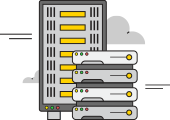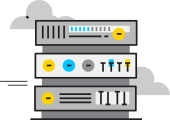Introduction
In the world of networking and cybersecurity, the term “Rogue Access Point” has gained prominence as a potential threat that organizations and individuals must be wary of. This deceptive device poses a significant risk by infiltrating networks and compromising data security. This article delves into the history, mechanics, types, usage, challenges, and future prospects of Rogue Access Points, shedding light on its potential intersections with proxy server technology.
Origins and Early Mentions
The concept of a Rogue Access Point traces back to the early 2000s when wireless networks began proliferating. The term “Rogue Access Point” was coined to describe an unauthorized access point that’s set up to mimic a legitimate network, luring unsuspecting devices to connect. The attacker gains access to the network’s traffic, potentially exposing sensitive information.
Unmasking the Rogue Access Point
Detailed Mechanics
A Rogue Access Point operates by exploiting the natural inclination of devices to connect to familiar networks. It impersonates a legitimate network by using identical or similar SSID (Service Set Identifier) names. Unsuspecting devices automatically connect to it, granting the attacker access to the network traffic. This interception can lead to data theft, Man-in-the-Middle (MitM) attacks, and other malicious activities.
Key Features
The Rogue Access Point is characterized by:
- Covert Setup: Attackers often deploy Rogue Access Points in hidden locations to avoid detection.
- Data Interception: It intercepts and analyzes network traffic, exposing sensitive information.
- MitM Attacks: Facilitates Man-in-the-Middle attacks where the attacker relays communications between two parties, potentially altering the information exchanged.
- Malware Distribution: Attackers can use the Rogue Access Point to distribute malware to connected devices.
Types of Rogue Access Points
| Type | Description |
|---|---|
| Honeypot Rogue AP | Attracts attackers to monitor their behavior and gather threat intelligence. |
| Ad-hoc Rogue AP | Unauthorized peer-to-peer network setup that can bridge external connections to internal networks. |
| Misconfigured AP | A legitimate AP with inadequate security settings that can be easily exploited by attackers. |
| Evil Twin AP | Mimics a legitimate AP, luring devices into connecting to it, giving attackers control over the traffic. |
Applications, Challenges, and Solutions
Usage
- Espionage: Attackers can use Rogue Access Points to intercept sensitive data for corporate espionage.
- Data Theft: Personal information, login credentials, and financial details can be stolen.
- Eavesdropping: Attackers can listen in on conversations and monitor internet activity.
Challenges and Solutions
- Detection: Identifying Rogue Access Points can be challenging due to their covert nature. Solutions include network monitoring tools and intrusion detection systems.
- Prevention: Implementing strong security measures, such as using strong encryption protocols and regularly updating network infrastructure, can prevent Rogue Access Point attacks.
Comparisons and Future Perspectives
Comparisons
| Term | Description |
|---|---|
| Rogue Access Point | Deceptive network point that intercepts traffic. |
| Proxy Server | Intermediary server that facilitates indirect network connections, enhancing privacy and security. |
Future Perspectives
As technology advances, Rogue Access Points might evolve to exploit emerging vulnerabilities, necessitating improved security measures. Additionally, advancements in machine learning and AI could enhance detection and prevention strategies.
Rogue Access Points and Proxy Servers
Proxy servers, like those provided by OneProxy, play a crucial role in safeguarding against Rogue Access Point threats. By routing traffic through proxy servers, users can establish secure connections, obscuring their identity and shielding sensitive data from potential interceptions by Rogue Access Points.
Related Links
For further information about Rogue Access Points and related topics, explore the following resources:
- Link 1: Understanding Rogue Access Points
- Link 2: Detecting and Preventing Rogue APs
- Link 3: Proxy Servers and Network Security
Conclusion
The Rogue Access Point remains a potent cybersecurity threat, leveraging deception to infiltrate networks and compromise data security. Understanding its mechanics, types, applications, challenges, and intersections with technologies like proxy servers is essential for staying ahead in the ever-evolving landscape of network security. As technology progresses, the battle between malicious actors and cybersecurity experts will continue, driving the need for robust and innovative defense mechanisms.




